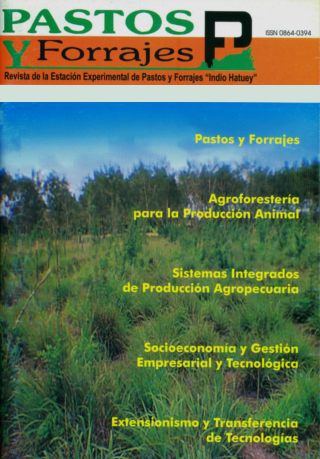Qualitative profile of secondary metabolites in the edible fraction of woody species selected by cattle in a semi-deciduous forest
Keywords:
Fabaceae, silvopastoral systemsAbstract
In order to characterize qualitatively the profile of secondary metabolites of the edible fraction of woody plants selected by cattle in a silvopastoral system of a tropophilous semi-deciduous forest of Venezuela, 14 Brahman x Holstein bulls of 390,4 ± 18,0 kg of LW were used. They were managed under continuous grazing on a surface of 81 ha, from which 50 ha corresponded to a semi-deciduous forest and the rest, to natural herbaceous vegetation (Cynodon nlemfuensis, Sporolobus indicus, Axonopus sp., Mimosa pudica and Hyptis suaveolens). The composition of the woody biomass selected by the animals was studied through the evaluation of the epidermal fragments present in the feces collected from the rectum, every 15 days. From these results, samples were taken from five plants per woody species, in the dry and rainy seasons. Fifteen groups of metabolites were determined: alkaloids, α-amines, soluble carbohydrates, cardeno- lides, cyanogens, sterols, total phenols, flavonoids, lectins, mucilages, quinones, saponins, ex- tractable (total and condensed) tannins and terpenoids. Most of the biomass corresponded to species from the Fabaceae family, which showed all the evaluated metabolites. In both seasons levels of sterols, terpenoids, total phenols and extractable tannins which varied from slight to abundant, were detected. Independently from the season, 66,7 % of the species showed between 10 and 11 secondary metabolites in their edible biomass. It is recommended to conduct studies for the quantification of the secondary metabolites present in woody plants of forage value, for this silvopastoral system.





